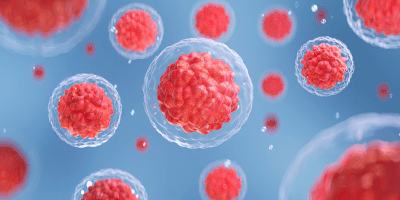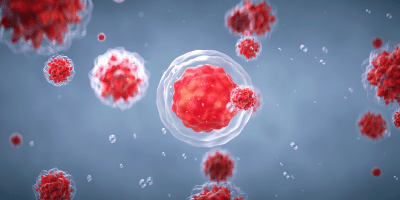
How Long Do Stem Cells Take To Work
Introduction to Stem Cell Stem cell regeneration is the latest advancement in regenerative medicine and it has captured attention due

Stem cell therapy has been proven beneficial for the treatment of multiple diseases and conditions. A list of diseases treated by stem cells is given below:
Stem cells are the major cells of the body and they have the potential to regenerate the tissues and treat various diseases. Their unique ability to differentiate into multiple cell types is what makes them valuable for medical research and therapeutic applications. In this blog, we will discuss what are the benefits of stem cells and explore the diseases that can be treated with the help of stem cell therapy.
Stem cells are undifferentiated cells that are capable of developing into different cell types which include muscle cells, red blood cells, or brain cells. They serve as a repair system for the body which replaces the adult tissues. There are mainly two types of stem cells:
These are derived from embryos and they can differentiate into any cell type and also offer immense versatility for medical applications. They are pluripotent which means that they can give rise to virtually any cell type in the body.
These are found in multiple tissues like bone marrow and fat. Adult stem cells are multipotent which means that they can differentiate into a limited range of the cell types which are related to their tissue of origin. The most examples are the Mesenchymal stem cells (MSCs) and hematopoietic stem cells (HSCs).
These are mainly adult cells that are reprogrammed to an embryonic stem cell-like state. iPSCs combine the flexibility of the ESCs with the ethical advantage of not using embryos.
Stem cells have the unique ability to regenerate damaged tissues and organs. This regenerative ability is important in the treatment of injuries and diseases where there is major tissue damage. For example, stem cells can be used to regenerate the heart tissue after a heart attack, repair spinal cord injuries, and heal burns by regenerating the skin tissue.
Some diseases involve the progressive degeneration of specific cells and these degenerative diseases are Parkinson’s, Alzheimer’s, and amyotrophic lateral sclerosis (ALS). Stem cell therapy aims to replace these damaged cells with new ones that slow down the progression and improve patient outcomes. For example, in Parkinson’s disease, the stem cells can be induced to become dopamine-producing neurons that can replace the ones that have degenerated.
Hematopoietic stem cells (HSCs) from bone marrow transplants have been used for decades to treat blood disorders like leukemia, lymphoma, and multiple myeloma. These stem cells replace the blood and immune cells and help to reset the patient’s blood and immune systems. This approach is helpful to use in conditions like severe combined immunodeficiency (SCID).
Stem cells help in the development of personalized medicine where treatments are customized according to the individual’s genetic makeup. iPSCs can be extracted from the patient’s cells and this reduces the risk of immune rejection and allows for more precise treatment plans. This customization is mainly helpful for complex and rare diseases.
Stem cells are valuable sources for drug testing and development. They can be used to create models of human diseases in the lab which helps researchers to test the safety and efficacy of the new drugs on the actual human cell types. This approach is helpful as it increases the speed of the drug development process and reduces reliance on animal testing.
The study of stem cells has helped scientists to understand human development and the mechanisms behind multiple diseases. This has helped in the discovery of new therapeutic targets and innovative treatments. For example, research on stem cells has provided information about cancer development and shown how certain genetic mutations can change the transformation of new cells into cancerous ones.
Stem cell therapy indeed offers potential but there are multiple challenges:
Multiple ethical issues are raised by the use of embryonic stem cells. However, advancements in the iPSC technology offer alternatives that are raising many concerns.
It’s important to ensure the safety and efficacy of stem cell treatments. Risks such as tumor formation and immune rejection need to be carefully managed with rigorous clinical trials.
Stem cell therapies must explore the complex regulatory pathways before they can be adopted on a large scale. Compliance with the regulatory standards is important to bring safe and effective treatments to the market.
Treatment with stem cells is expensive and this makes a challenge a great challenge to make it accessible to a wide range of the population. To reduce costs and improve accessibility it is important to continue the research and technological advancements.
Stem cells are a major concept in medical science and they have the potential to revolutionize the treatment of multiple diseases and injuries. The reason why it is the foundation of medical science is that it can easily regenerate damaged tissues, replace lost cells, and even offer personalized treatment options. As more research is done in the medical field the scope of stem cells for the treatment of multiple diseases as we given a list of diseases treated by stem cellsis increasing and it is giving hope to millions of patients around the globe.

Introduction to Stem Cell Stem cell regeneration is the latest advancement in regenerative medicine and it has captured attention due

Imuregen is one of the top cellular health supplements that is formulated to support your body’s health. As age increases